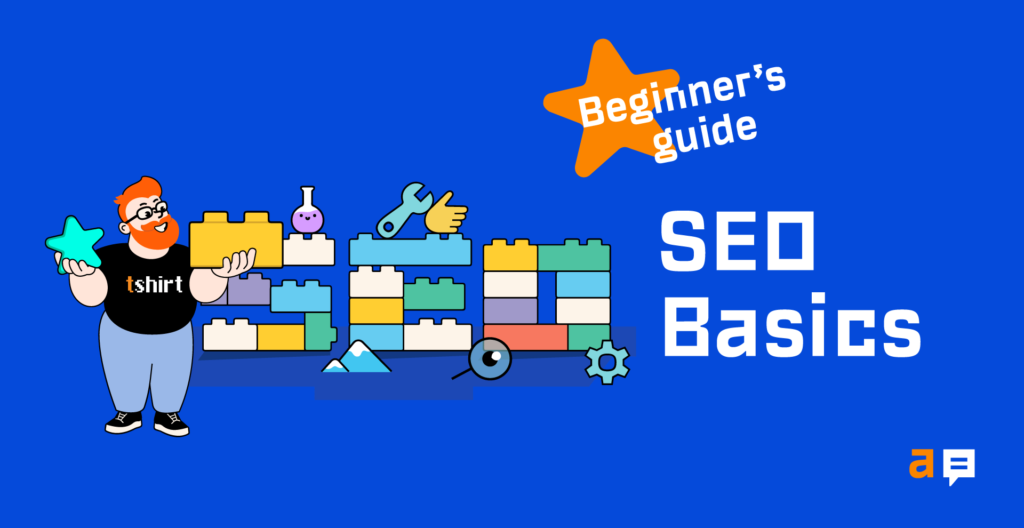Our content strategy at Ahrefs is simple.
In a nutshell, we:
- Create blog posts and videos about relevant topics that people search for on Google and YouTube.
- Nurture and educate those people with useful content on Twitter and in our newsletter.
- Retain customers and build brand loyalty using product-focused tutorials in our help center, academy, and in our tool itself.
This strategy has been hugely successful for us. We get 500K+ monthly visits to our blog from Google, have 100K+ people on our mailing list, and have 200K+ subscribers on YouTube.
More importantly, it’s helped our ARR grow pretty consistently over the years.
But while you could blindly copy our content strategy, that wouldn’t necessarily be wise because what works for us might not work for you.
That’s why we wrote this guide—to show you how to create a content strategy that makes sense for your business.
Here’s everything you’ll learn:
Content strategy focuses on the vision and plan for your content. It’s where you answer questions like why and how to create content, who the content is for, and ultimately how you’ll utilize content to market your business.
What’s the difference between content strategy and content marketing?
Content marketing is the process of creating, editing, and promoting content for marketing purposes. It might be a blog post, video, product documentation—anything that helps you to attract, nurture, and retain customers.
In other words, content marketing is the execution of tactics that further your content strategy.
To make things even more confusing, if you create a Venn-diagram of content strategy and content marketing, the intersection is your content marketing strategy.

Content marketing strategy concerns itself with the planning and orchestration of your content marketing efforts. It involves defining your brand voice and style, content ideation, creating a content calendar, setting and measuring goals, etc.
Having a content strategy is important to ensure that each piece of content you create has a purpose. It stops you from creating content for the sake of it and throwing money down the drain on random content that does nothing for your business.
It also helps ensure that you’re creating content for the right audience, in the right format, for the right channel.
Creating a content strategy can be quite a daunting process, so we’ve created a simple framework to make things easier called the content strategy canvas:

The purpose of the content strategy canvas is to help you create a basic content strategy by answering five simple questions:
- Who are you creating content for?
- Why are you creating content?
- What type of content will you create?
- Where will you publish the content?
- How will you create the content?
Let’s walk through how to answer each of these questions.
Question 1: Who are you creating content for?
Putting into words who you’re trying to reach with your content is the first and most crucial step. It will serve as a guiding light for all your content creation efforts and help keep you on track.
If you’ve done your market research and created customer personas, this should be easy. You’ll already have a solid idea of who you’re trying to reach.
For example, if you’re a mortgage broker in Florida, that might be something like:
Millennial couples (25–30) in Florida with aspirations of owning their first home. They’re working professionals strapped for time and feel frustrated by the complexity of the process of getting on the property ladder.
If you don’t know quite so much about who you’re targeting, feel free to keep things broader.
For example, as providers of SEO software, something like this would make sense for us:
People who want to drive more traffic to their website(s).
It’s somewhat oversimplified, but it’s enough to help us avoid creating content about dead-end topics.
For example, take a topic like “reverse image search.” This sounds like a topic related to SEO on the face of it, and it gets an estimated 1.6M monthly searches in the US…

… but the reality is that most people searching for this likely don’t even have a website. They’re probably just trying to hunt down a catfish.
Here’s our content strategy canvas so far:

Question 2. Why are you creating content?
Each piece of content should have a purpose.
Broadly speaking, there are four of these:
- Increase brand awareness and introduce your brand to potential customers.
- Create interest and desire by teaching potential customers more about their problems and how your product or service can solve them.
- Nurture interest and entice the purchase by further educating potential customers about your product or service and why it’s the best solution for them.
- Retain customers and build brand loyalty by educating customers on how to get the most out of your product or service and clearly demonstrating its value.
If you’re familiar with the marketing funnel, you’ll notice that these four “purposes” align broadly with the stages of the buying journey.

Either way, you’ll see that these “whys” are prefilled on the content strategy canvas because you need to create content for all purposes. After all, there’s no point in having a well-known brand if nobody ever buys anything from you, and there’s no point working to attract customers if you can’t retain them.

However, it’s important to understand one thing before we continue:
Each piece of content can serve multiple purposes.
Many of our blog posts offer good examples of this idea in practice. For example, take a topic like “how to find low competition keywords.” This post arguably serves all stages of the marketing funnel to varying degrees.

That said, some content pieces will be more focused on solving just one problem.
For example, take our “Ahrefs vs.” page. This page explains what the industry thinks of Ahrefs compared to our competitors and showcases a few of our unique features.
Here are the problems it does and doesn’t solve by my estimations:

Depending on where you’re at in your content marketing journey, you may need to focus more on one of these “purposes” more than the other. This is where a content audit can come in handy, but that’s a topic for another day.
Question 3: Where will you publish content?
Knowing why you’re creating content is a good start, but you also need to know where to publish it to reach customers and potential customers.
Given the myriad of publishing options these days, this process can be overwhelming.
Here are just a few places you could publish content:
- Blog/website
- YouTube
- Social networks
- Slideshare
- Guest posts (i.e., on other peoples’ websites)
- Podcasts
- Q&A sites (e.g., Quora)
So which should you choose?
Firstly, don’t get bogged down trying to create content for every channel imaginable. These are all viable options in one way or another, but you can’t do everything—especially when you’re just starting on your content journey.
Secondly, don’t choose randomly.
You should choose one or two channels that make the most sense for your business, and you should base these on your answers to two questions:
- Which channels solve your “whys”?
- How and where do your customers consume information online?
Let’s start by answering the first question…
Every good content strategy involves creating content for each stage of the journey—from brand awareness to customer retention—but not all marketing channels are suitable for solving all problems.
For example, publishing an email newsletter is of no use for building brand awareness because those unaware of your brand don’t subscribe. Similarly, doing podcasts is hardly likely to help you retain customers and build brand loyalty.
You either need to choose one channel that’s suitable for all stages or multiple complementary channels.
Here’s a quick cheat sheet for the most popular owned channels to help:

How do you know which two channels to choose?
This is where the second question comes in handy:
How and where do your customers consume information online?
Your market research should have uncovered the answer to this question but if you’re not sure, consider asking or surveying your customers directly. Alternatively, if you’re considering your blog/website or YouTube channel as one of your marketing mediums, use a keyword research tool like Ahrefs’ Keywords Explorer to see if people are searching for topics related to your business.
For example, we see thousands of people searching for SEO-related topics every month on Google and YouTube:


This tells us that publishing content on these channels makes sense for us.
We also know that we can use social media and email marketing to nurture and retain customers, so we’ll create content for these channels too.

Question 4. What type of content will you create?
If you’re planning to publish content on YouTube, it’s pretty obvious that you’ll be publishing videos because that’s the only type of content you can publish. But for many other marketing channels, things aren’t always so obvious.
Take your website, for example. There are many types of content you could publish, including:
- Blog posts
- Whitepapers
- Landing pages
- Wiki articles
- Interactive tools
- Video courses
Nobody has unlimited resources for creating content, so it’s worth considering which content types you want to focus on.
For instance, on our website, we mainly focus on creating three types of content:
- Blog posts
- Wiki articles
- Interactive tools
Right now, we have 906 blog posts, and our blog gets an estimated 253K search visits every month—according to the Top subfolders report in Ahrefs’ Site Explorer.

Sidenote.
Many of these blog posts are translations; we only have ~300 English posts.
We have 10 free tools, which send us an estimated 301K monthly search visits.

And we have 267 Wiki/help articles that send us an estimated 2.3K monthly search visits.

Those 2.3K visits to our Wiki articles might seem negligible compared to our blog and free tools, but the purpose of this content isn’t to drive tons of traffic. Its purpose is to educate and retain customers by answering common questions about our toolset.
On Twitter, we mainly focus on creating and sharing product updates…
NEW: The “Organic traffic” graph now accounts for seasonal fluctuations of search volume!
This data will show in Organic keywords 2.0, Top Pages 2.0, and the Organic search tab and metrics in your Site Explorer Overview. pic.twitter.com/eLmZrzygZB
— Ahrefs (@ahrefs) May 6, 2021
… and informative threads with distilled knowledge from our blog posts:
If you have custom illustrations or infographics on your site, it’s highly likely that others will use them in their content.
For example, here’s a graph from our post about long-tail keywords on another blog: pic.twitter.com/6q32eEbB9G
— Ahrefs (@ahrefs) December 29, 2020
When it comes to filling out this section of your content strategy canvas, don’t overthink things. Just jot down relevant types of content for each step in the journey.
It’s also fine to use the same type of content across multiple stages where it makes sense. For example, we utilize blog posts for everything from raising brand awareness to nurturing customers, so we list that content type across all stages in our canvas. But we only list wiki/help articles in the retention stage.

Question 5. How will you create the content?
Creating a content strategy isn’t just about planning what to do. You also need to consider how to execute your plan.
In other words, you need to ask yourself: “what resources will I need?”
You can group these resources into two categories:
- People. Who do you need to hire, and what skills do you need?
- Products and services. What tools or services will you need?
For example, say we wanted to create blog content and YouTube videos for a new brand, we’re probably going to the following people at a bare minimum:
- Blog content writer(s)
- Scriptwriter(s)
- Blog editor
- Videographer
- Video editor
- Designer
- Virtual assistant (VA)
We’ll also need a few products and services, including:
Here’s our completed canvas:

Final thoughts
Having a content strategy is invaluable for keeping your content creation efforts on track and ensuring that the content you create has a purpose. After all, it’s super easy to fall into the trap of creating content just for the sake of it.
If you’ve already created your content strategy, the next step is creating a content marketing strategy and start creating content.
Got questions? Ping me on Twitter.



